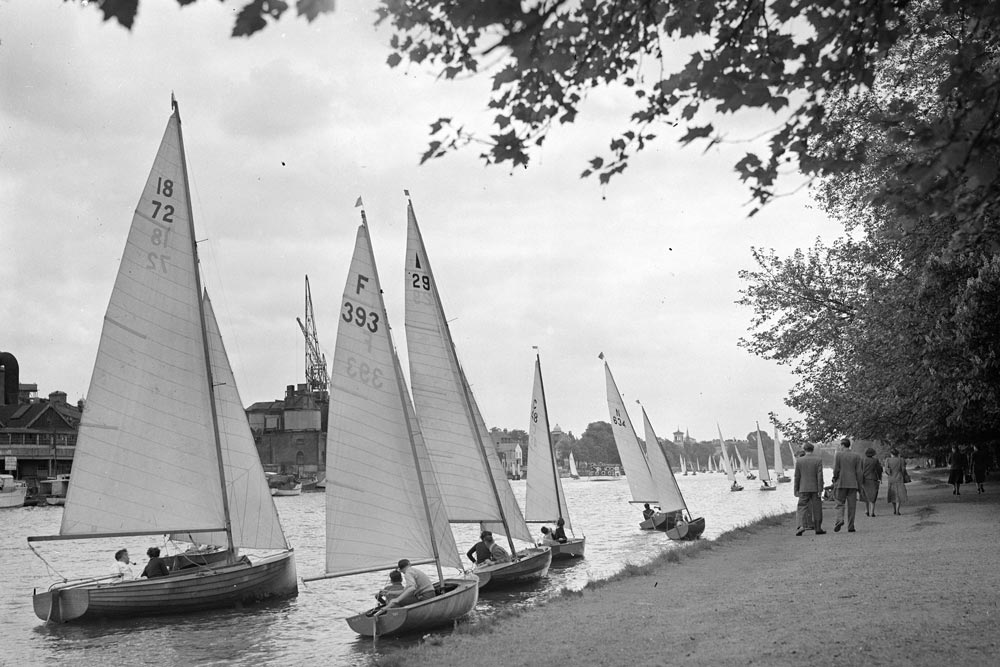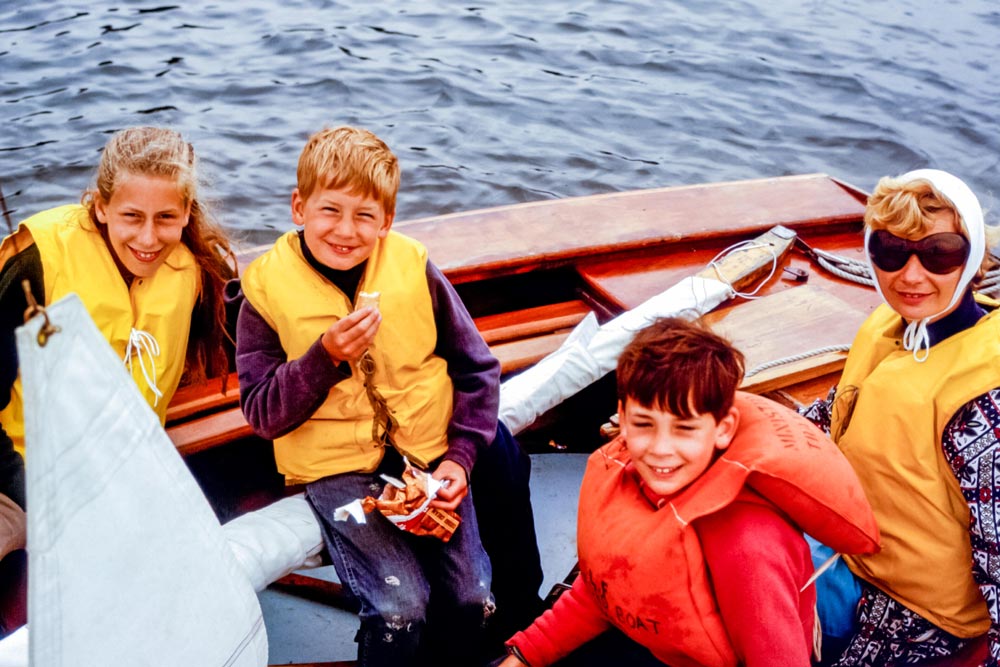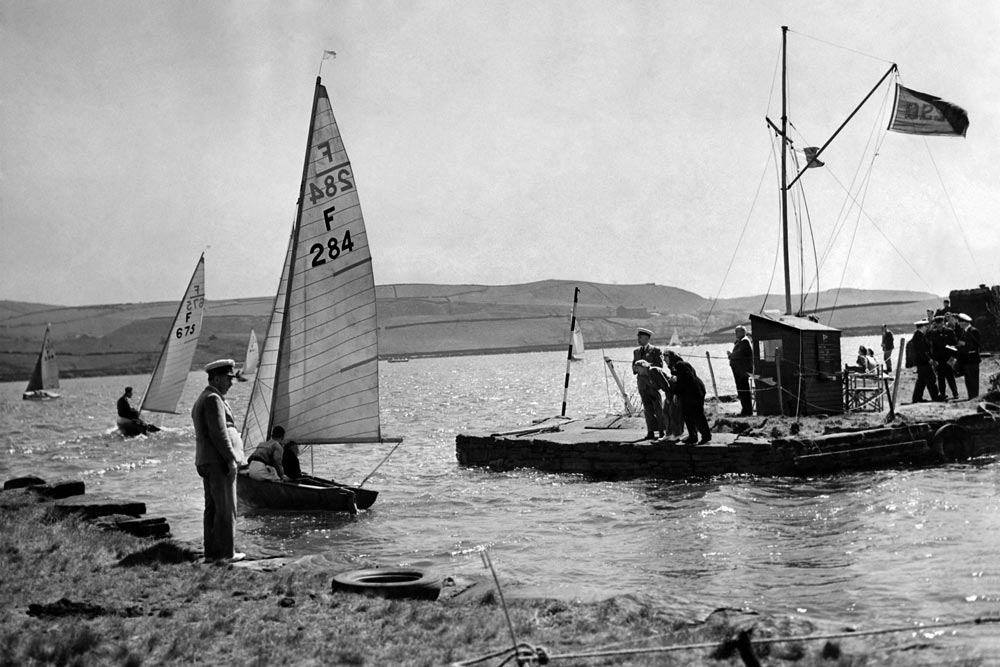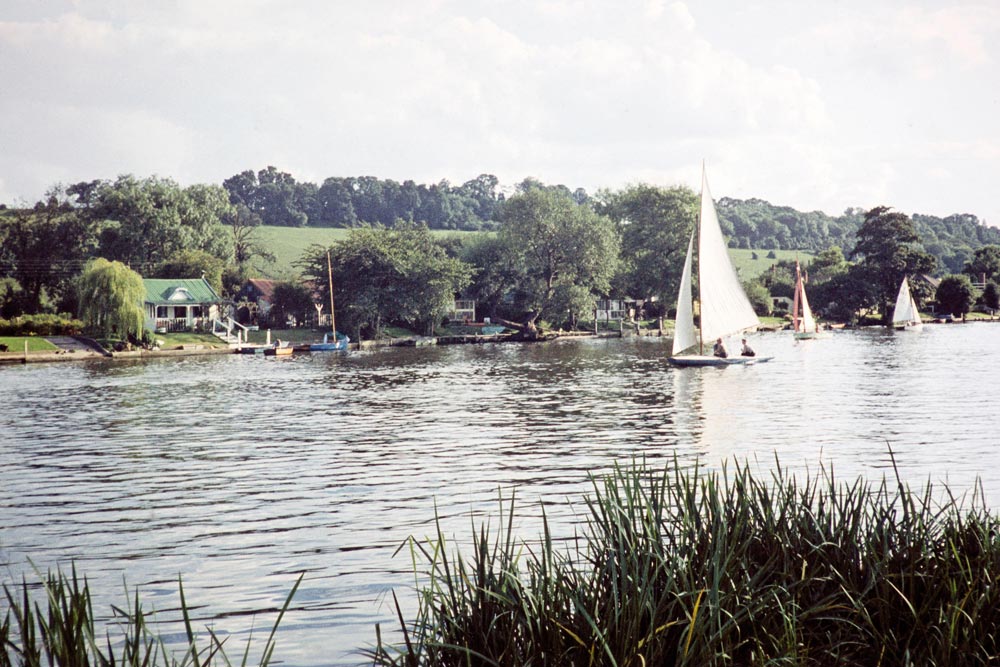1950 – 1975

As life carried on after the horror and austerity of war years, the early 1950s saw leisure boating take on a new importance. Along with the media promotion of the ‘nuclear family’, more free time and greater car ownership, the number one aspiration of the so called ‘man in the street’ was to own a boat. And it wasn’t just dinghies that were breaking new ground. The growing range of small coastal cruisers becoming available meant that the whole family could enjoy taking to the together, not necessarily racing. A change was needed to reflect this new accessibility to the water and, in 1952, the Yacht Racing Association became the Royal Yachting Association, the RYA that we cherish today. The timing for this change was perfect, as sailing, across all genres, was about to be blessed by what became known as the ‘golden era’.

At the same time the RYA was becoming increasingly involved in the search for a new international class racing dinghy. Although the International Yacht Racing Union would take on the role of managing boats such as the Flying Dutchman and 5o5, the RYA would choose another performance dinghy, Ian Proctor’s Osprey and add it to the growing list of ‘National’ dinghies. The second half of the decade would see those YRA initiatives from the late 1940s aimed at opening large stretches of inland water paying off, as two Jack Holt designed dinghies, the Enterprise and Solo, were being seen in ever greater numbers at new sailing clubs on lakes and reservoirs around the country. With participation at all levels booming, the proliferation of new classes of boats would see the RYA take ownership of what had started as the Langstone Handicap system, now known as the Portsmouth Yardstick, with the two initials ‘PY’, taking on an ever-greater importance in the world of sailing.

As the UK moved into the ‘swinging sixties’, exciting new boats such as the Fireball made their appearance, whilst the popular classes would keep the RYA busy processing hundreds of new registrations every year. Airlines and modern communications were now shrinking the world, allowing the UK to bask in our Olympic success with a silver medal for Keith Musto and Tony Morgan at Tokyo in 1964 and golden moment in Acapulco for Rodney Pattisson and Iain MacDonald-Smith.
The Association launched its regular membership publication, RYA Magazine. The stories reported in the magazine are the very stuff of legends, with championship events in the UK attracting entries that were measured in their hundreds.
With a strong interest in helping this golden growth, the RYA moved into training with the launch of the Dinghy and Coaching schemes. This was also the high-water mark for the domestic open meeting scene, with each weekend seeing whole fleets of boats being towed to away events. This armada of nomadic sailors would help spread ideas and innovations around the UK and in 1971 the RYA would respond to their needs by undertaking a major re-organisation, with the Country now divided up into regions that were best able to service the needs of their local boating communities.

Just how aware the RYA was of the changing nature of boating is evident by the way they responded to what had started out as a fringe activity, but which quickly caught the public attention. In launching the Weymouth Speed Week, which would champion those who wanted the ultimate in performance under sail, the RYA would put themselves at the forefront of this exciting development.
The era would end with the RYA recognising the growing importance of the yacht cruising community. This area of boating was growing rapidly as more and more marinas were constructed around our coasts. The current training scheme, aimed at teaching sailors the key points of yacht management, from safety to passage planning and more run by the Board of Trade but now taken over by the RYA under the banner of its ‘Yachtmaster Scheme’ This training and assessment would rapidly become the gold standard for this area of training.
By 1975 boating activities were riding high, but new pressures were beginning to be felt, with new challenges to the RYA looking to arrive on the next tide!
